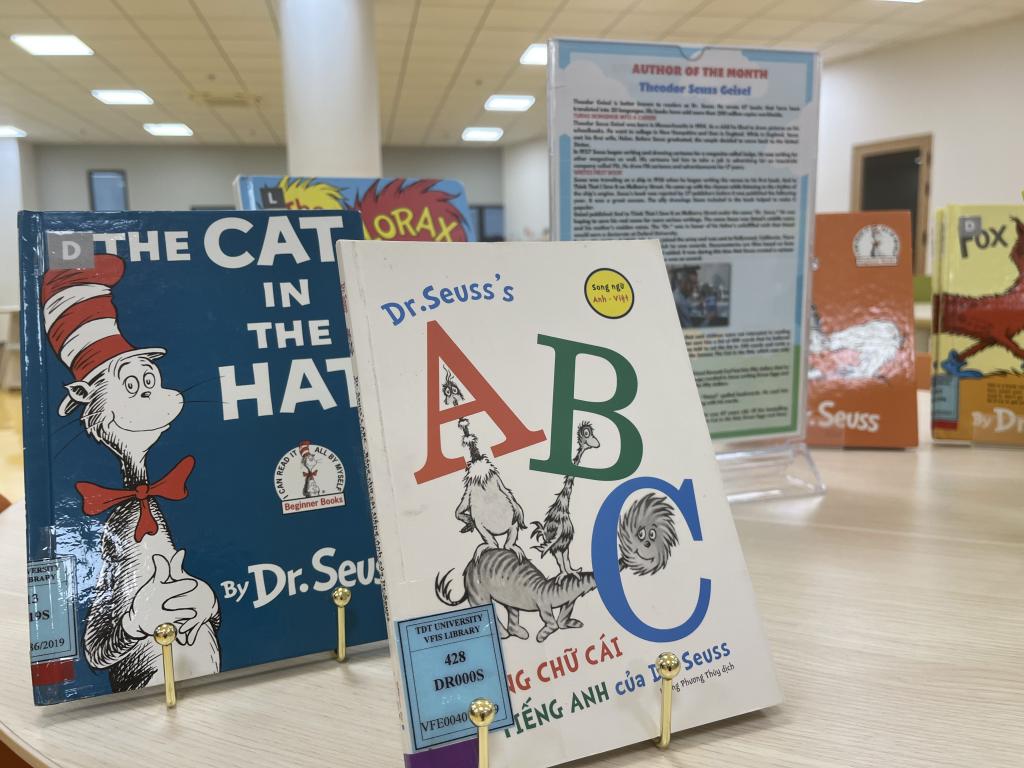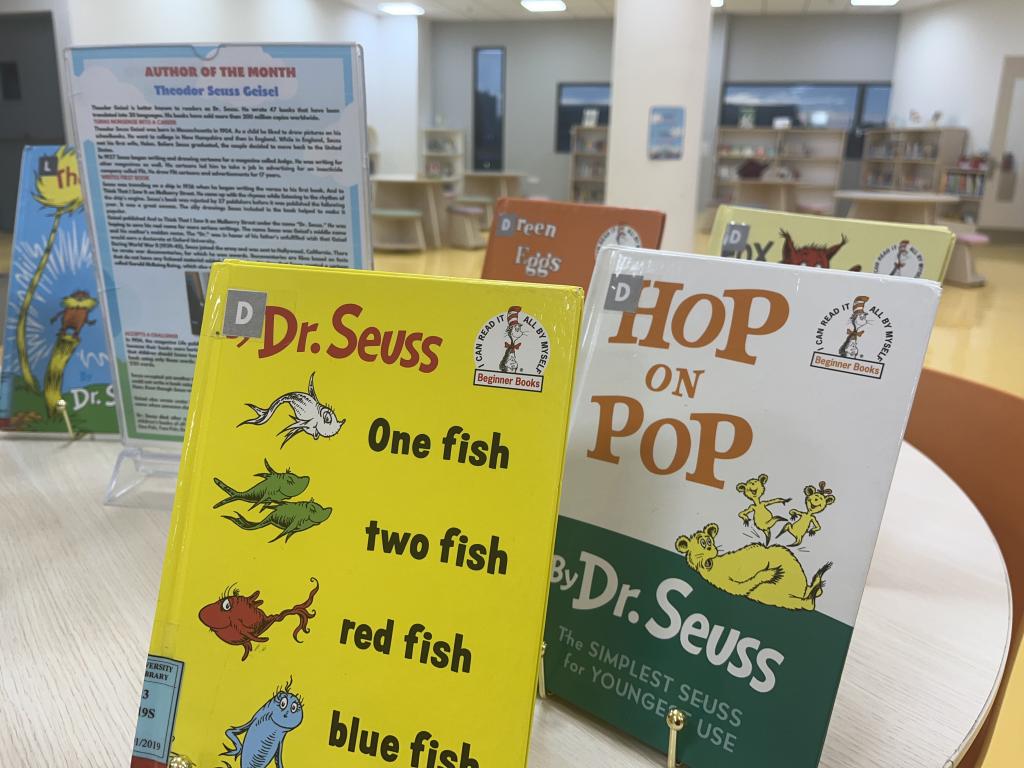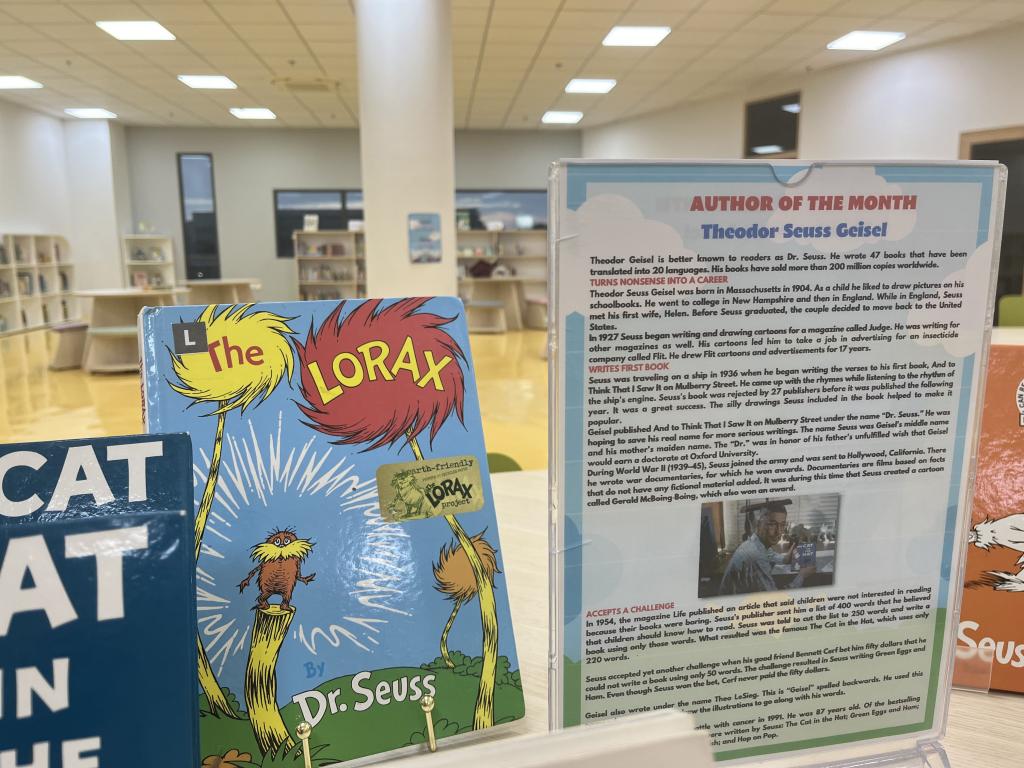Author of the month: Theodor Seuss Geisel
This month, we would like to introduce you one of the the best-loved and certainly the best-selling children's book writers of all time is Theodor Seuss Geise, better known under his pseudonym "Dr. Seuss".
Author Theodore Geisel draws a picture of his character, the Grinch.
© World History Archive/Alamy Stock Photo©
EARLY LIFE AND CAREER
Theodor Seuss Geisel was born and raised in Springfield, Massachusetts. He attended Dartmouth College, where he was editor of the school’s college humor magazine, the Dartmouth Jack-O-Lantern. Geisel regularly published cartoons in the magazine. In the spring of 1925, just before Geisel was to graduate, he and some friends were caught drinking alcohol on campus. The incident resulted in Geisel losing his editorship of the Jack-O-Lantern. He continued to publish his cartoons, however, using several pen names to hide his identity, including the pseudonym Seuss.
After Dartmouth, Geisel went on to attend Oxford University in England, where he planned to earn a doctorate degree in literature. At Oxford, he met his future wife, Helen Palmer. The pair married in 1927 and left England later that year. After they had settled in New York City’s Lower West Side, Geisel began writing articles and providing cartoons for the popular humor magazine Judge. His cartoons appeared in multiple magazines throughout his early career, including Life, Vanity Fair, and Liberty. Geisel often submitted his work under the pseudonym Dr. Theophrastus Seuss before shortening it to the simpler Dr. Seuss.
Geisel’s cartoons caught the attention of an ad executive’s wife, who suggested her husband’s company use Geisel’s work in their ads. Geisel was hired to create a cartoon ad campaign for Flit, a brand of insect repellant. His work was very popular with audiences, and his tagline “Quick, Henry, the Flit!” became one of the most popular catchphrases of that era. Geisel continued to work in advertising and went on to create campaigns for companies such as NBC, Ford, and General Electric. Advertising became his main source of income for more than three decades, but he managed to work on his own projects on the side.
BECAME PUBLISHED CHILDREN’S AUTHOR
Geisel had begun to write stories for children as early as 1931. While on a vacation cruise in 1936, Geisel came up with an idea for a story that was inspired by the rhythm of the cruise ship’s engine. He would use this rhythm to pace the rhymes in his first children’s book And to Think That I Saw It on Mulberry Street, published in 1937. That same year, Geisel discovered his wife was unable to bear children.
Geisel published three more books throughout the remainder of the 1930s before enlisting in the army following the outbreak of World War II. The army sent him to Hollywood to write military documentaries. He also created a popular cartoon character during this time called Gerald McBoing-Boing. The character was later turned into an Academy Award–winning short film. Geisel also published hundreds of politically themed cartoons between 1941 and 1943 that often mocked enemy leaders such as Adolf Hitler and Benito Mussolini. His political cartoons also showed his opposition to discrimination against Jewish people and African Americans, acts of prejudice that were very common at the time.
Geisel’s anti-discrimination themes carried over into his children’s book writing. Over the next few decades, he created a number of stories specifically aimed at attacking prejudices. His 1954 book Horton Hears a Who! tells the story of the Whos, a community of tiny creatures threatened by the great powers surrounding them. The book’s main character, Horton, decides to stand up for the helpless Whos. Geisel wanted to teach his readers to treat everyone with respect, no matter their differences, and made sure to write stories incorporating this theme whenever he could.
A LIFE OF RHYME
Geisel was responsible for the creation of some of the most popular children’s book characters in history, several of which he based on himself. The most famous examples of Geisel’s use of himself as a character model include The Cat in the Hat and How the Grinch Stole Christmas, two of his most acclaimed books. Published in 1957, the books stood out among children’s literature for decades after they first appeared. The books were later turned into successful animated and live-action films.
Despite his success as an author, Geisel’s private life was marked with sadness. He learned early in his married life that he and his wife could never have children. Tragedy struck in 1967 when Helen committed suicide after a long illness. Geisel eventually married again, to Audrey Stone Dimond, whom he remained with until his death in 1991.
Geisel published forty-four books as Dr. Seuss during his lifetime, coauthoring more than twenty other books as either Dr. Seuss or under another name. Geisel’s publisher also released several of his books after his death. All but five of Geisel’s books were written as rhyming poems. The author also made up many words for his books that would later enter everyday language. One of his most famous word creations was “nerd,” which first appeared in his 1950 book If I Ran the Zoo. For his contribution to children’s literature, Geisel was awarded a Pulitzer Prize in 1984. He died of oral cancer in September 1991 at the age of eighty-seven.
Here are some his books in the library:




Now, let's come with us and enjoy the Dr.Seuss's beloved stories!
Reference
"Dr. Seuss." Gale Middle School Online Collection, Gale, 2021. Gale In Context: Middle School, link.gale.com/apps/doc/EZZMTR208769632/MSIC?u=vntdtu&sid=bookmark-MSIC&xid=736612ae. Accessed 4 Apr. 2022.
- Log in to post comments





